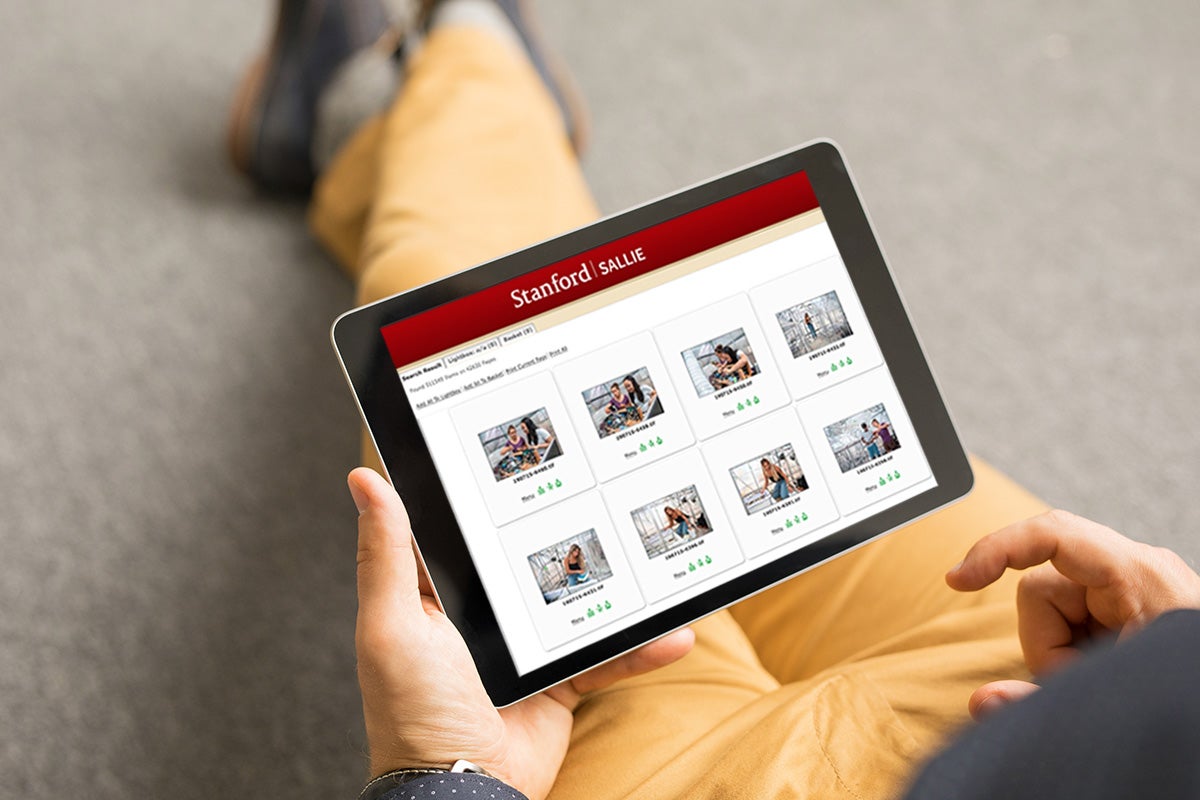Enhancements launched in SALLIE, Stanford’s image management platform
To meet increased requests for university images and storage of digital assets, Stanford will introduce enhancements to SALLIE – the campus-wide digital image management platform – in September. The upgrade is a partnership between University Communications and University IT.
Pamela Moreland, the editor of Stanford for You and the digital asset management librarian in Stanford University Communications, discusses enhancements that will make SALLIE, the university’s vast image database, easier to use.

Enhancements, including an improved user interface that will allow images to be uploaded and downloaded from iPhones and iPads, will make SALLIE, the university’s image database, easier to use. (Image credit: Courtesy Stanford University IT)
What is SALLIE?
SALLIE – Stanford ALL-Image Exchange – is the university’s campus-wide system for managing and sharing digital assets – photos of people, places and events – used in communications across campus, including newsletters, annual reports and websites. Currently, SALLIE holds more than 800,000 images.
Who can use SALLIE?
SALLIE is available for use by any school, department, organization or person with a direct affiliation to Stanford. All you need is a SUNet ID to access the site.
What are the benefits of the enhanced SALLIE?
It improves discovery, retrieval and management of digital images by making them easier to catalog, find and manipulate.
What are some of SALLIE’s new features, functionality and capabilities?
When the enhancement rolls out Sept. 1, SALLIE users will experience new features, functionality and capabilities, including:
- An improved user interface that will allow images to be uploaded and downloaded from iPhones and iPads, as well as any web browser. This is made possible by upgrading to Cumulus 11 from the current Cumulus 9.1.1.
- The ability to upload and manage images directly in the SALLIE website, rather than having to use the Cumulus desktop client.
- Easier search and retrieval functionality for images with the introduction of visual search, a way to find like images without having to use keywords or tags.
- The ability to size and crop images for social media using the standards outlined by the Stanford Identity Toolkit.
- The ability to size and download images directly into InDesign documents through a Cumulus InDesign plugin. This will be especially useful for users who design creative collateral.
- An experiment with facial recognition through the use of artificial intelligence auto-tagging.
Do members of the university community need to do anything to use SALLIE once it rolls out?
Most SALLIE users don’t have to do a thing to get ready. When you sign into SALLIE for the first time in September, we hope you’ll find it easier to use. If you need help, look at the bottom of the landing page for the SALLIE FAQs link. Click on it and a page of step-by-step instructions will appear.
If you still are having problems, either open a ServiceNow help ticket or send an email to picturestanford@stanford.edu. A member of the SALLIE Support Team will get back to you as soon as possible.
What do you need to do to prepare if you are an editor who uploads images or an asset manager who supervises a team of editors?
If you are an editor or an asset manager, when you leave work on Friday, Aug. 30, uninstall Cumulus 9 (here are instructions on how to uninstall Cumulus 9). When you return to work in September, try doing your job through the website. If after a few days, you think that you will be more productive using the desktop client, contact the SALLIE Support Team, either by ServiceNow help ticket or an email to picturestanford@stanford.edu. We will work with you on your request.
What are the objectives for the new SALLIE?
When Stanford launched SALLIE in 2009, no one dreamed that the daily demand for images would play such a major role in Stanford’s communication mission. All of this growth has changed the demand for SALLIE services and transformed the way users search SALLIE. That’s what this upgrade is all about: making sure that SALLIE is always relevant and meets the needs of the Stanford community.
